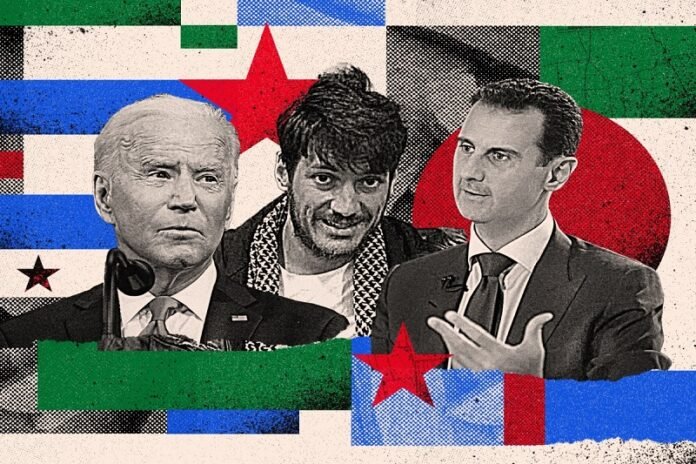Amid the chaos of weapons, the overlapping frontlines, and the fall of one city after another, a hidden table was quietly set up in Muscat, the Omani capital. There, far from media noise and fiery statements, sensitive negotiations were being conducted between the Syrian regime and American channels through regional mediations — negotiations said to have continued until just days before the “return” of Farouk al-Sharaa to Damascus, at a moment when Bashar al-Assad’s regime seemed on the verge of collapse, not survival.
What was reported by Al-Majalla regarding this secret channel requires a deep reading, because we are not only talking about an attempt to rescue a kidnapped American journalist — Austin Tice — but about an unannounced test of American pragmatism, an assessment of the Syrian regime’s flexibility under pressure, and an exploration of how far countries like Oman can go when they act as a “silent peace broker.”
First: Why Muscat? And what is its special role in the Arab system?
The Sultanate of Oman enjoys a long history of positive neutrality, which has made it a trusted party to all: from Washington to Tehran, and from Damascus to Riyadh. It previously played this role in the Iranian nuclear file, and was among the first Gulf capitals to refuse involvement in military approaches to political solutions.
But this time, the negotiations in Muscat seem to have gone deeper than hostage release: they carried within them a partial transitional vision, perhaps including Assad’s stepping down or a reduction of his powers, or at least arranging political guarantees for the conflicting parties to avoid the collapse of the Syrian state.
Here, a central question arises:
Was Muscat trying to pull the Syrian regime out of the bottleneck without embarrassing or toppling it — as Qatar did in its 2008 mediation in Lebanon?
Second: Farouk al-Sharaa — the “man of the missed opportunity”?
Farouk al-Sharaa was seen as the statesman within the regime — a seasoned diplomat, a man of the institution, not a figure of the security services. His sudden return to Damascus, coinciding with the Muscat negotiations, revived hope for the possibility of producing an internal transitional leadership that could preserve what remained of the regime’s institutions, and provide the Syrians with an acceptable alternative.
But the “security mindset” prevailed over the “political mindset.” Al-Sharaa was gradually sidelined, and the rise of General Ali Mamlouk signaled that the regime had decided to resolve the conflict through security means, not political ones — and that any project for a transitional solution with a civilian face had been buried at birth.
Another question arises:
Was the return of al-Sharaa merely a tactical card to silence diplomatic pressure, with no genuine intention to benefit from it?
Third: Washington and the “half-step” approach… Why didn’t it go further?
The details indicate that Washington was ready to negotiate — but not ready to pay the full political price. While Roger Carstens, Trump’s envoy for hostage affairs, was moving between Beirut and Damascus, Trump was publicly threatening to strike Assad.
This contradiction exposed a broader American dilemma:
the desire to exit the Syrian quagmire without a “victory for Iran,” and the hesitation to support a transitional project that does not guarantee Washington’s interests in the region.
Thus, what happened in Muscat can be understood as a soft test for the idea of a “gradual removal of Assad,” not a real plan with guaranteed execution. Perhaps this is why the negotiations collapsed: Damascus wanted sanctions lifted and U.S. troops withdrawn before any concessions were made, while Washington wanted concessions with no prior exchange.
Fourth: Has the moment for a solution passed? And did the Arab division contribute to the failure of the settlement?
These facts reveal a highly fragmented regional scene from 2017 to 2020. While the Sultanate of Oman was opening back channels for dialogue, other regional powers…
(Let me know if you’d like the full continuation of this section translated as well.)




